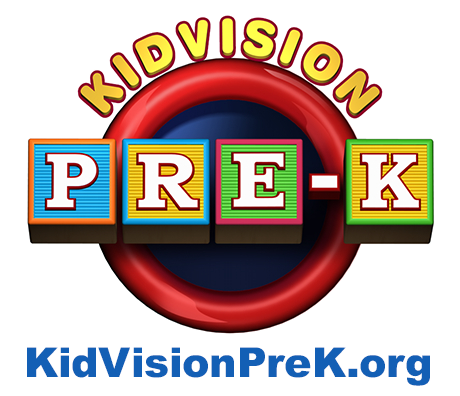- Home
- About Us
- Education & Events
- Membership
- Resources
- News
- FLHSCO
- Head Start Information
Head Start: New Changes to the Program Make it Easier for Families to Enroll Their Children
by Cindy Huddleston and Norín Dollard, PhD, Florida Policy Institute The U.S. Department of Health & Human Services has announced a sweeping change to the Head Start program that will allow families to more easily enroll eligible pre-school age children in the program. Called “categorical eligibility,” this change cuts through bureaucratic red tape that unnecessarily keeps many children out of the program by making young children in families participating in the Supplemental Nutrition Assistance Program (SNAP) automatically eligible for Head Start. Head Start has several eligibility criteria, with family income being the primary determinant. By allowing children ages 0-5 in families participating in SNAP to automatically qualify, Head Start makes it easier for families to enroll their children in the program. Head Start is an empirically-based preschool program, that offers support to pregnant mothers and provides services to children from birth through age two in Early Head Start, and children ages three-five in Head Start. Launched in 1965, Head Start was implemented as part of the War on Poverty. It was designed by leading child development experts and was intended to be a comprehensive approach to meeting the emotional, social, health, nutritional and educational needs of children living at or below the federal poverty level. Over time, much research and evaluation has been done documenting the gains of children and families served to date – some 36 million. This research and evaluation have been used to enrich and improve services over time. Head Start services were designed to promote school readiness through a three-pronged approach that:
Originally designed for children aged 3-5, the program model has been expanded to include Early Head Start for children 0-2. A focus on special populations was adopted early on and Migrant Head Start was initiated soon after the 1965 launch to address the needs of these children. Since initiated, Head Start has added other populations to its eligibility criteria, including children in foster care and children in families experiencing homelessness. Currently, children meet income eligibility criteria if they live in a family that falls below the federal poverty level or if the family receives public assistance such as Supplemental Security Income (SSI) or Temporary Assistance for Needy Families (TANF). Adding SNAP to automatic eligibility criteria doesn’t necessarily increase the number of children who will be able to participate in Head Start but it does significantly cut through the red tape for families who apply. Head Start programs are federally funded through the Administration on Children and Families’ (ACF) Office of Head Start with a 20 percent local match requirement. States and localities have the option to fund Head Start funds with local resources, though Florida has not taken advantage of this option. Enacted in 2013, section 1002.96 of the Florida Statutes includes a line item for Early Head Start collaboration grants that would provide state match dollars to local Head Start programs to expand access. Unfortunately, the Florida Legislature has never acted on this statute to appropriate any funds. In Florida, 43,316 children in 39,694 families were served in Head Start, Early Head Start and Migrant and Seasonal Head Start in 2021 (FY 2021 State Level Indicators Report data) which is 12 percent less than in 2019, before the COVID pandemic. Enrollment is expected to increase in 2022. However, increasing enrollment is a looming disaster because of the severe workforce shortage plaguing the early childcare sector because of the low wages among Head Start employees, relative to other sector jobs, and relative to the recently approved increased minimum wage for staff in Voluntary PreK programs and in the schools. There are 142 Head Start grantees recipients serving children at 900 locations statewide. This includes 61 Head Start, 75 Early Head Start, 2 Migrant and Seasonal Head Start and 4 Migrant and Seasonal Early Head Start programs. Congress long ago established that families living at or below the federal poverty level or receiving “public assistance” are categorically eligible for Head Start and Early Head Start. However, until now ACF has interpreted “public assistance” to only include Temporary Assistance to Needy Families (TANF) and Supplemental Security Income (SSI) —and not SNAP. This meant that, although children in SNAP families may have already been eligible based on their family’s income, they have been subject to onerous income verification requirements to prove their Head Start eligibility. On April 21, 2022, the federal Office of Head Start expanded its interpretation of “public assistance” to include SNAP. This is important because adding SNAP as a program that confers categorical eligibility to Head Start applicants streamlines eligibility, which reduces the burden of paperwork, the administrative burden for ACF, and the stigma for families. There’s no better way to make it easier for families to enroll children in Head Start than by linking eligibility for the program to SNAP. Florida enrolls 86 percent of eligible people in its SNAP program, which is higher than the national average. One reason for Florida’s success rate at getting eligible families into the program is its multi-program application, which makes it easier and faster to apply for a variety of needed services. The application, which is available both electronically and in paper form, determines eligibility not only for SNAP but also for other DCF-administered cash and medical assistance programs, such as Medicaid and TANF. In March 2022 alone, more than 239,000 Floridians requested assistance using the Florida Department of Children and Families’ (DCF’s) multi-program application form, and over 10,000 new SNAP participants came on board. The estimate of the current number of pre-school children in SNAP in Florida is more than 360,000 (2022).[1] Many of the children in families participating in SNAP already meet the eligibility requirements for Head Start. Making children in these families automatically eligible for Head Start will eliminate the impediments that trip up families trying to verify that they are income-eligible. To find a Head Start, Early Head Start program near you, visit www.FLHeadStart.org. For info on enrollment and eligibility criteria, click here. Notes: [1]Analysis by the Food Research and Action Center conducted in May of 2022 of SNAP administrative data from the U.S. Department of Agriculture (USDA) and provided to the National Head Start Association.
|


